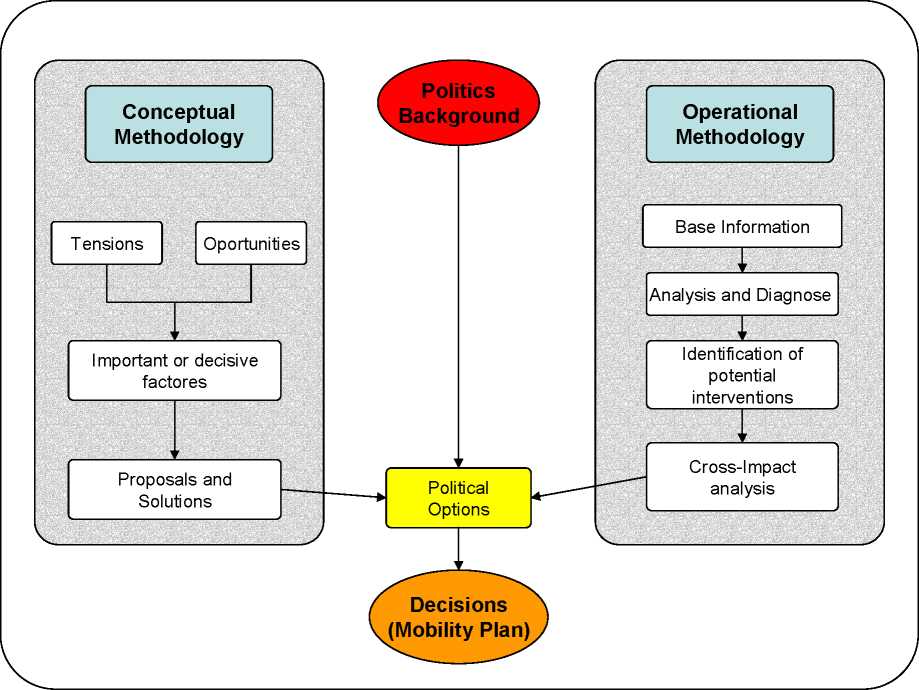In order to develop this strategic mobility plan, different sectors of the municipality were analyzed
(both the transportation sector and the non-transportation sector), and the cross-links impacts
were analysed. The document was organized accordingly to two different chapters: a chapter of
diagnosis and another of political options; and a final chapter that should provide to the decision-
maker different packages of interventions, pointing out which could be taken, and how each
package would affect the results of other options.
The next point will detail the methodology developed as well as its practical implementation,
through the development of the “options of mobility to the municipality of Alcobaça”.
3.1 Main concept

The concept developed and proposed at this study is described schematically bellow.
Figure 1 - Conceptual and Operational methodology in order to reach decisions and set up a
Mobility Plan (Gaspar, 2003)
In order to reach the final goal (decisions on mobility / mobility plan) two different streams of
actions need to be taken: 1. develop the conceptual methodology, 2. develop the operational
methodology. Both are interrelated, but need to be clearly framed. The technical issues of the
conceptual methodology and operational methodology informing the Political Options once they
play an important role in guiding the decision-making process.
7/17
More intriguing information
1. Rent-Seeking in Noxious Weed Regulations: Evidence from US States2. Name Strategy: Its Existence and Implications
3. The name is absent
4. The name is absent
5. The name is absent
6. Why unwinding preferences is not the same as liberalisation: the case of sugar
7. The fundamental determinants of financial integration in the European Union
8. The name is absent
9. The name is absent
10. Wirtschaftslage und Reformprozesse in Estland, Lettland, und Litauen: Bericht 2001